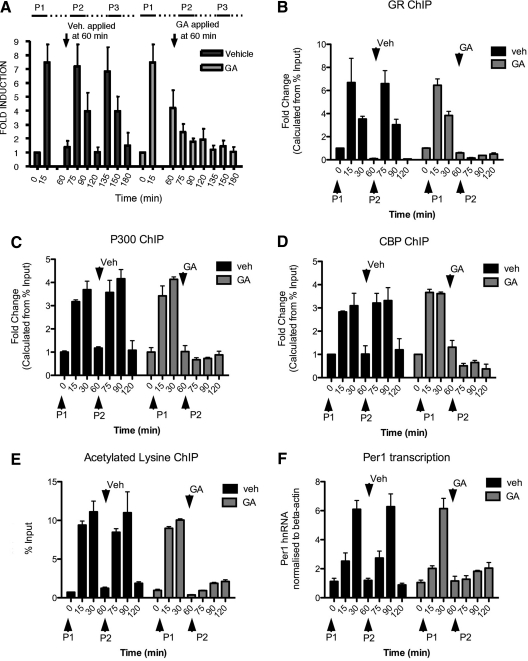Fig. 5.
Inhibition of HSP90 with GA renders GR unable to be reactivated by subsequent pulses of CORT and ablates cyclical downstream transcriptional events. A, Treatment of AtT-20 cells with GA after nuclear translocation was complete and after GR dissociation from the DNA template (i.e. at 45 min after corticosterone withdrawal) resulted in failure of the GR to be subsequently reactivated by further GC pulses. Activated GR was measured in nuclear extracts in the TransAM assay. B, ChIP assay revealed that GR association with the PER1 GRE followed the expected kinetics observed in Fig. 1 for the first pulse. After treatment with GA, GR could not be detected at the PER1 GRE during the second corticosterone pulse. The HAT p300 (C) and CBP (D) were both recruited to the GRE, closely after GR. This association was maximal at 15 and 30 min but reduced to baseline levels by 60 min. The transient recruitment of p300 and CBP to the GRE was ablated after treatment with GA. E, The pulsatile changes in net lysine acetylation at the PER1 GRE was negated by GA treatment. F, Pulsatile transcription (measured here by quantitative PCR of PER1 hnRNA) was ablated by GA treatment. P, Pulse; Veh, vehicle.

